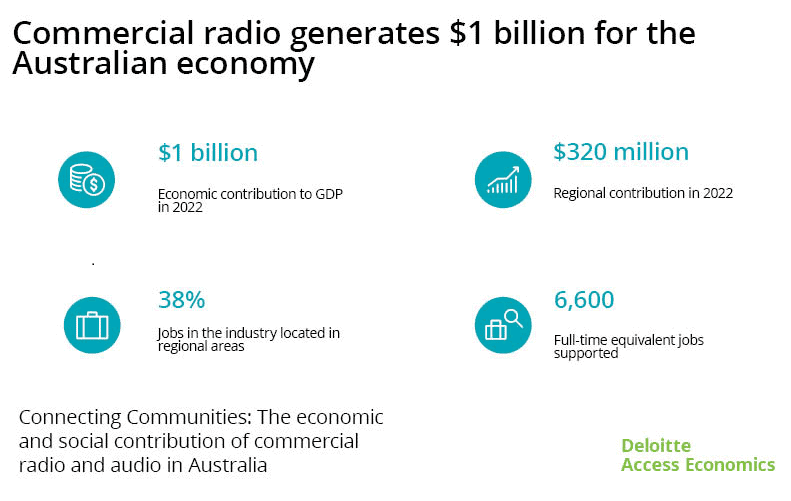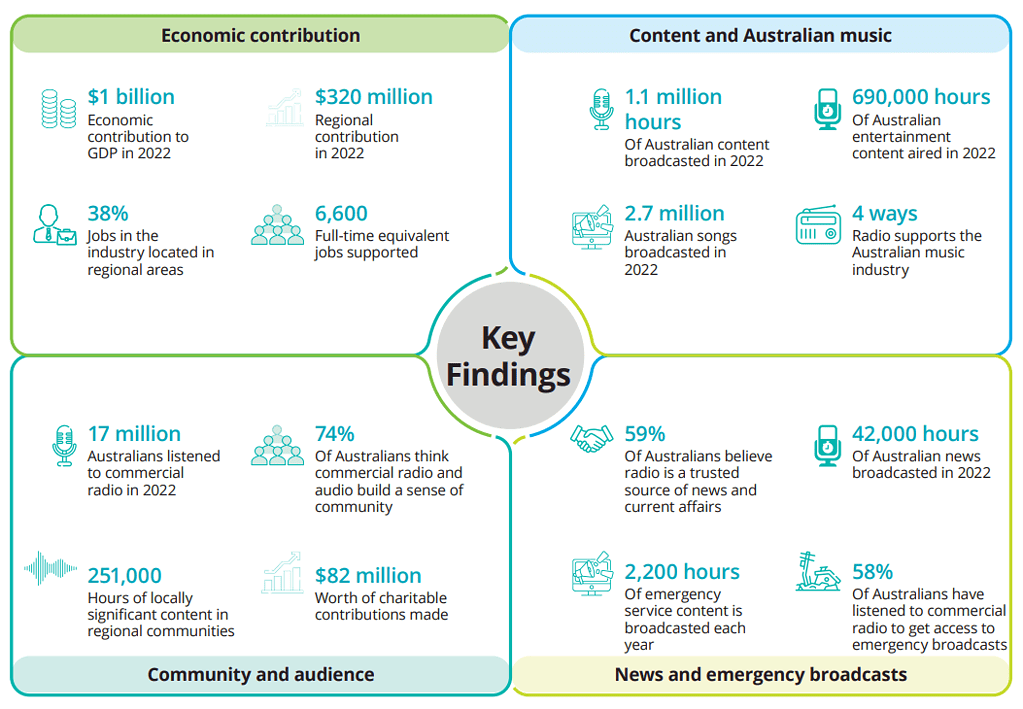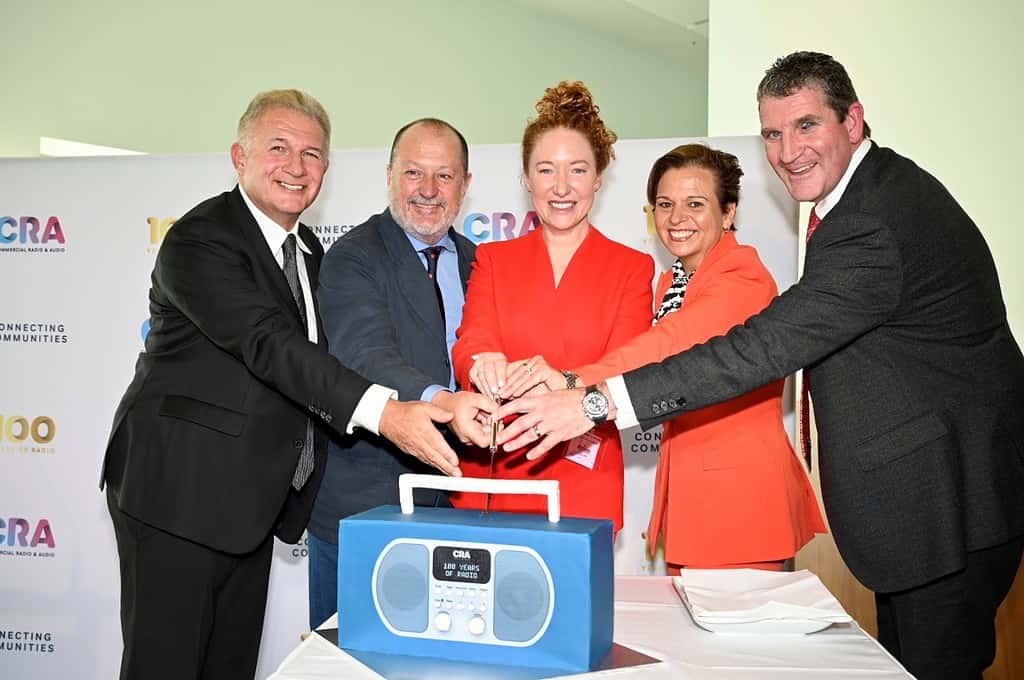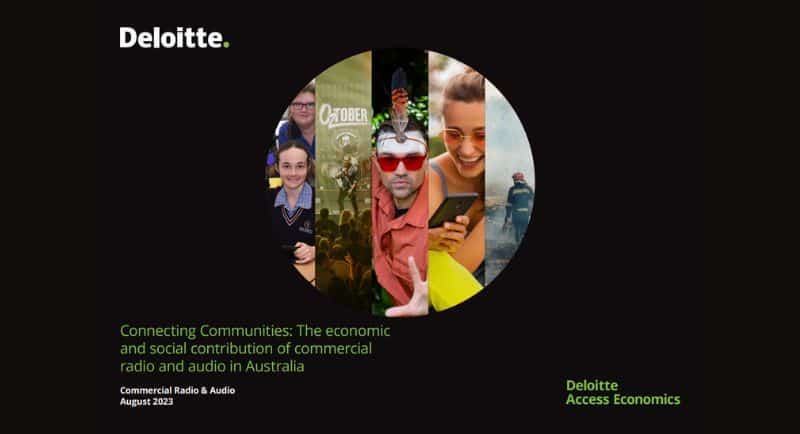A report commissioned by Commercial Radio & Audio (CRA) and produced by Deloitte Access Economics has found the industry contributes $1 billion to the nation’s annual GDP, including a $320 million boost to regional Australia.
Findings from the report – “Connecting Communities: The Economic and Social Contribution of Commercial Radio and Audio in Australia” come as commercial radio in Australia turns 100 this year with celebrations kicking off following the launch of a new report.
The CRA study found commercial radio stations broadcast 1.1 million hours of Australian content, 2.7 million Australian songs, 42,000 hours of news and 2,200 hours of emergency service content in 2022.
Ford Ennals, CRA CEO, said: “The Connecting Communities report is the first time in 100 years of broadcasting that we have evaluated the economic contribution of radio and its role in delivering trusted, local content to listeners all over the country. These figures show how important it is to have a sustainable Australian radio industry that delivers great audio content free of charge to everyone, everywhere.”
The industry supports 6,600 full-time equivalent jobs with 38% of jobs located in regional Australia.
Seventeen million Australians listen to commercial radio – 74% believe radio and audio build a sense of community and 58% have listened to hear emergency broadcasts.

CRA Chair and CEO of ARN Media Ciaran Davis said: “Radio has had an enormous influence in shaping modern Australia, providing a platform for debate and launching the careers of many successful Australian entertainers, music artists and journalists.
“The industry creates an enormous quantity of local audio content with 1.1 million hours of programs across broadcast, streaming and podcasts. It also remains the lifeblood of regional media, producing 251,000 hours of locally significant regional content in areas where other local media have disappeared.”
The study found radio has positive impacts across other industries and sectors. It plays a key role in music discovery, broadcasting 160,000 hours of Australian music or 2.7 million songs each year, equivalent to 7,400 spins per day.

Commercial radio networks also made $82 million in charitable contributions through donations and airtime in 2022.
Deloitte partner John O’Mahony said: “Deloitte Access Economics analysis shows the commercial radio and audio sector contributed $1 billion to Australia’s GDP and supported 6,600 FTE jobs in 2022, based on data provided by nine networks. Beyond commercial radio’s economic contribution, our research shows Australians recognise the value of commercial radio in helping to build a sense of community, being a trusted source of news in times of crisis, and part of a thriving Australian music ecosystem.”
The study was launched at an event at Parliament House in Canberra on Thursday, hosted by 3AW breakfast presenter Russel Howcroft, with Federal Communications Minister Michelle Rowland cutting a cake in honour of radio’s 100th birthday MIX 106.3’s breakfast host Kristen Davidson also took part in the event.

Left and right: Ford Ennals, Russel Howcroft, Kristen Davidson and Communications Minister Michelle
Centenary celebrations will continue at the 2023 Commercial Radio & Audio Awards to be held in Sydney on Saturday, October 14.
The first commercial radio broadcast went to air in Australia on the evening of 23 November 1923 when people across Sydney gathered in their homes to hear the wondrous new technology. The first radio broadcast was of the St Andrews Choir performing The Swan on 2SB.
By the 1930s, the majority of Australians were within reach of a station with early programming focusing on music, news, weather, radio dramas and quiz shows. Talkback radio was introduced in 1967. Commercial FM radio started in 1980, followed by DAB digital radio in 2009.
Today there are more than 260 commercial radio stations across Australia, with 220 located in regional areas, with radio finding new audiences through mobile apps, streaming and podcasts.
